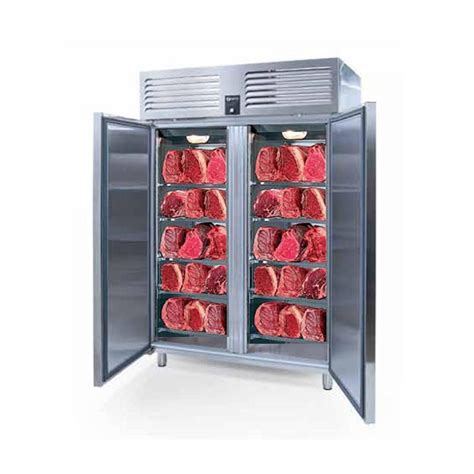Iceinox: The Ultimate Guide to Stainless Steel

Iceinox: The Ultimate Guide to Stainless Steel
Introduction
Stainless steel has become an integral part of our lives. From the cutlery we use to eat to the appliances in our kitchens, stainless steel is everywhere. But what exactly is stainless steel, and what makes it so special? In this comprehensive guide, we will explore the world of stainless steel, discussing its properties, applications, and the latest innovations.
Properties of Stainless Steel
Stainless steel is a unique alloy of iron, chromium, and other elements. Unlike ordinary steel, stainless steel contains a minimum of 10.5% chromium, which forms a protective oxide layer on the surface of the metal. This oxide layer prevents the iron from oxidizing, making stainless steel highly resistant to corrosion and rust.
In addition to its corrosion resistance, stainless steel also offers a number of other benefits, including:
* Strength: Stainless steel is stronger than ordinary steel, making it ideal for use in structural applications.
* Hardness: Stainless steel is harder than ordinary steel, making it more resistant to wear and tear.
* Heat resistance: Stainless steel can withstand high temperatures without losing its strength or integrity.
* Aesthetics: Stainless steel has a clean, modern look that makes it popular in architectural and design applications.
Applications of Stainless Steel
Stainless steel is used in a wide variety of applications, including:
* Cutlery: Stainless steel is the preferred material for cutlery because it is durable, easy to clean, and resists corrosion.
* Kitchen appliances: Stainless steel is used in the construction of a wide range of kitchen appliances, including refrigerators, dishwashers, and ovens.
* Architectural: Stainless steel is used in the construction of buildings, bridges, and other structures because it is strong, durable, and resistant to corrosion.
* Automotive: Stainless steel is used in the construction of cars and trucks because it is strong, lightweight, and resistant to corrosion.
* Medical: Stainless steel is used in the construction of medical equipment and devices because it is biocompatible and resistant to infection.
Types of Stainless Steel
There are many different grades of stainless steel, each with its own unique properties. The most common grades of stainless steel are:
* 304 stainless steel: This is the most common grade of stainless steel and is used in a wide variety of applications.
* 316 stainless steel: This grade of stainless steel is more resistant to corrosion than 304 stainless steel and is often used in marine applications.
* 430 stainless steel: This grade of stainless steel is magnetic and is often used in cutlery and other applications where strength is important.
Benefits of Stainless Steel
Stainless steel offers a number of benefits over other materials, including:
* Durability: Stainless steel is extremely durable and can withstand a wide range of environmental conditions.
* Corrosion resistance: Stainless steel is highly resistant to corrosion and rust, making it ideal for use in outdoor applications.
* Low maintenance: Stainless steel is low maintenance and does not require painting or coating.
* Aesthetics: Stainless steel has a clean, modern look that makes it popular in architectural and design applications.
Environmental Benefits of Stainless Steel
Stainless steel is an environmentally friendly material and can be recycled. It is also non-toxic and does not release harmful chemicals into the environment.
Innovations in Stainless Steel
The stainless steel industry is constantly evolving, with new innovations being developed all the time. Some of the latest innovations in stainless steel include:
* Super stainless steel: This new grade of stainless steel is even more resistant to corrosion than traditional stainless steel and is being used in a variety of new applications.
* Self-healing stainless steel: This new type of stainless steel can heal itself from scratches and other damage, making it even more durable.
* Antibacterial stainless steel: This new type of stainless steel has been treated with antibacterial agents to help prevent the spread of bacteria.
Story Cases
The following are a few story cases that illustrate the benefits of stainless steel:
* The Golden Gate Bridge: The Golden Gate Bridge is one of the most iconic structures in the world and is made of stainless steel. The stainless steel used in the bridge has helped to protect it from the harsh marine environment for over 80 years.
* The Burj Khalifa: The Burj Khalifa is the tallest building in the world and is made of stainless steel. The stainless steel used in the building helps to protect it from the harsh desert environment.
* The Sydney Opera House: The Sydney Opera House is one of the most famous buildings in the world and is made of stainless steel. The stainless steel used in the building helps to protect it from the harsh marine environment.
Humorous Language
Stainless steel is a versatile material that can be used in a variety of humorous ways. For example, you could use stainless steel to make a suit of armor for your pet hamster or to create a stainless steel sculpture of your favorite superhero.
Conclusion
Stainless steel is a versatile, durable, and environmentally friendly material that has a wide range of applications. From the cutlery we use to eat to the buildings we live in, stainless steel is an essential part of our modern world. As the stainless steel industry continues to evolve, we can expect to see even more innovative and groundbreaking uses for this amazing material.
